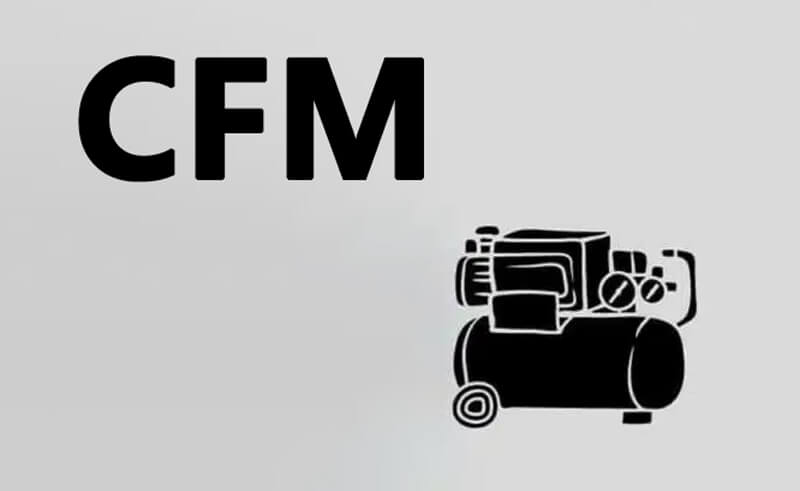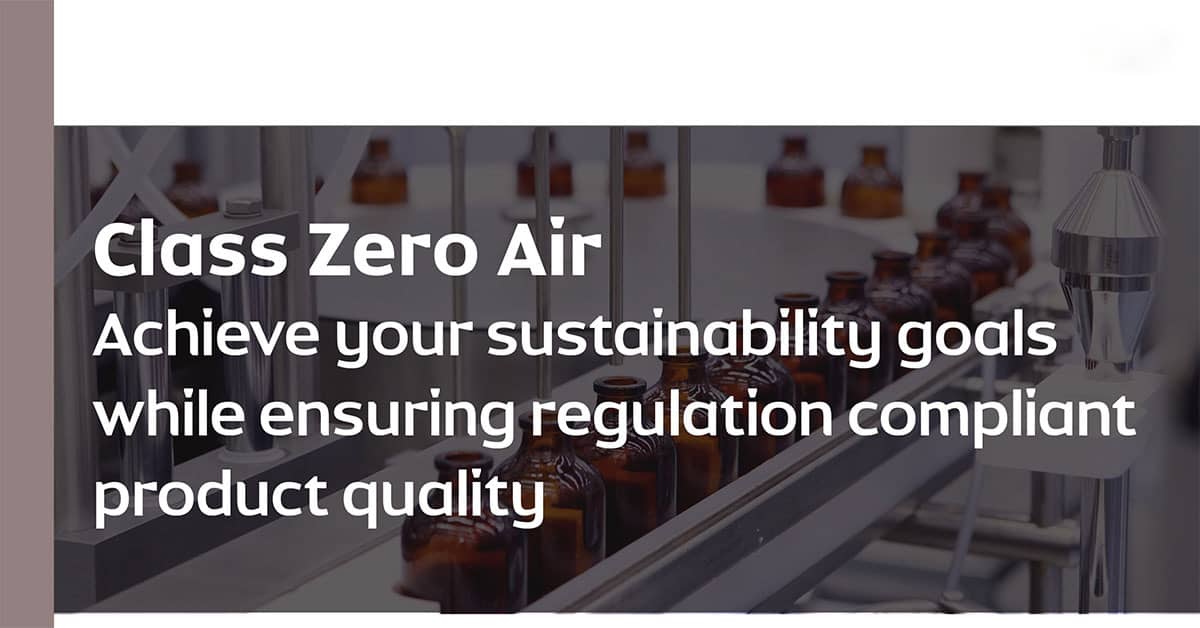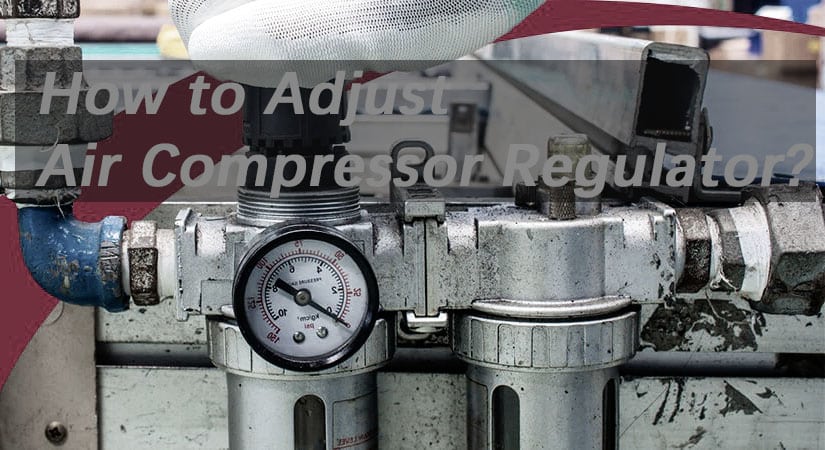air compressor blog
Air compressor terminology guide
- Nov 25, 2023
As you conduct your air compressor research, it is crucial to understand the basic air compressor terminology involved. These terms form the core of air compressor technology and are of vital importance when you buy or wholesale air compressors from the air compressor manufacturers. Using professional air compressor terminology can help improve communication efficiency and pave the way for your success in the air compressor bussiness.
By reading the BISON Air Compressor Terminology Guide, becoming proficient in these terms will enable you to thrive in the air compressor business and provide the highest quality service to your customers.
Common air compressor terminology Glossary
What is Absolute pressure?
The measurement of pressure relative to the absolute zero pressure of a space — e.g., a vacuum.
What is Absolute temperature?
The temperature of air or gas is referred from absolute zero and is also known as Rankine temperature (Fahrenheit plus 459.6) and Kelvin temperature (Celsius plus 273).
What is Absorption process?
an action that causes a desiccant to liquefy by attracting condensed moisture.
What is Actual capacity (FAD)?
This is the amount of compressed gas delivered (at rated speed and conditions) to the discharge system.
What is Adiabatic Head?
Expressed in foot-pounds (ft. lbs.), this is the amount of energy required to move one pound of gas to different pressure levels adiabatically (without heat transfer).
What is Adsorption?
A process in which a porous desiccant (regenerable) attracts moisture from the compressed air and removes it.
What are Air receivers?
Tanks or vessels store pressurized gasses and dampen discharge line pulsations. Larger compressed air systems may have both primary and secondary receivers.
What are Air (gas) bearings?
Hydrostatic or hydrodynamic machine elements can carry loads due to high pressure. Bearings allow a degree of movement with air (or other gas) acting as a lubricant.
What is Aftercooler?
A heat exchange device that cools the exhaust air after compression. After cooling, any resulting condensate can be removed using a moisture separator.
What is Automatic sequencer?
A control device or tool programmed to operate air compressors in a predetermined sequence.
What is Brake horsepower (bhp)?
The horsepower required at the input shaft of the compressor for proper performance.
What is Capacity gauge?
This tool is used to measure the amount of airflow inside rotary screw compressors. Results are usually displayed as a percentage of capacity.
What is Check valve?
A Check valve is a device used to allow a one-way flow of air inside the compressor. It permits airflow in one direction while preventing backflow or reverse flow in the opposite direction.
What is Compression ratio?
Expresses the comparison between two absolute pressures: inlet pressure and discharge pressure.
What is CFM ?
CFM stands for Cubic Feet per Minute. It is a unit of measurement used to quantify the volumetric flow rate of air or gas, indicating how much air passes through a specific point within one minute. CFM is commonly used in assessing the capacity or performance of air compressors and other air-handling systems.
What is Free Air CFM?
The airflow rate at a specified point and condition is then converted to ambient conditions.
What is Actual CFM?
Air flow rate at a specified point and condition.
What is Inlet CFM ?
The air that flows through the inlet filter or valve of the compressor (under rated conditions).
What is Standard CFM?
The free air flow rate is measured and converted to a uniform set of reference conditions.
What is Cut-in pressure?
The minimum discharge pressure that, when reached, switches the compressor from unload to load operation.
What is Cutout pressure?
The maximum discharge pressure that, when reached, switches the compressor to unload.
What is Duty Cycle?
The air compressor duty cycle refers to the length of time the machine can continue to operate within a specified period of time, usually expressed as a percentage.
This continuous working cycle will directly affect the running time of the compressor and the rest or cooling time. Different compressor types have greatly different duty cycles, so this factor is a key point that cannot be ignored in ensuring long-term efficient operation of the compressor and extending its service life. Continuous operation beyond the specified working cycle may cause overheating of compressor components, leading to early wear problems.
What is Desiccant?
a material with a very porous surface that can draw in water vapour from the surrounding air and then remove it.
What is Dew point?
The temperature at which the air’s moisture begins to condense if the air continues to cool at the same pressure.
What is Diaphragm?
A static element of a multistage compressor is found between the compressor stages. May add guide vanes.
What is Diaphragm cooling?
A heat removal method that circulates coolant through the diaphragm.
Displacement
Expressed in cfm, this is the volume displaced by the piston or rotor.
Compression efficiency
Compares the theoretical power to the power delivered to the air or gas by the compressor.
Isothermal efficiency
Compares the theoretical work to the actual work transferred to the gas during compression.
Mechanical efficiency
Compares power delivered (from air or gas) to brake horsepower.
Polytropic efficiency
Compares the compressed polytropic energy (transferred to the gas) to the actual transferable energy.
Volumetric efficiency
Compares the compressor’s actual capacity to its piston displacement.
What is Exhauster?
A compressor whose inlet pressure is lower than its atmospheric pressure.
What are Expanders?
Engines or turbines in which the expanding gas works and then undergoes a temperature drop.
What are Air compressor Filters?
Air compressor filter is a device used to remove moisture, particles and lubricants from the surrounding air.
Free air
Refers to atmospheric air that is not affected by the compressor.
Full load
Refers to the full-speed operation of an air compressor, providing the maximum airflow through a wide-open inlet and discharge.
Gauge pressure
It’s usually expressed in pounds per square inch (psig). This is the pressure most instruments or tools are used to determine.
Inlet pressure
It’s the actual pressure at the inlet flange of the compressor.
Intake pressure
The total pressure at the inlet connection point of the compressor.
Intercooling
The process in which heat is removed from the gas or air between compression stages.
Load factor
The relationship between the average compressor load and the maximum compressor load during a specified period.
Load/unload control
A control method that allows compressors to operate at no load or full load while the driver speed remains constant.
What is Piston displacement?
The volume of air displaced by the piston. The first-stage piston displacement is the overall piston displacement for multistage compressors.
What is Pneumatic tools?
Special tools powered by compressed air.
What is Polytropic head?
Expressed in foot-pounds (ft. lbs.), this is the energy required to compress air polytropically (reversibly) to move one pound of gas from one pressure to another.
Pressure drop
It means pressure loss in a compressed air system due to restriction or friction.
Relative humidity
The comparison between the partial pressure of a vapor and its saturation pressure at the dry-bulb temperature.
Rotor
A compressor rotating element consisting of one or more impellers and shafts in moving compressors.
What is Specific humidity?
In a mixture of air vapor, it is the weight of water vapor per pound of dry air.
What is Standard air?
It is defined as 68°F (20°C), dry (0% relative humidity), and 14.5 pounds per square inch absolute (psia) in ISO standards.
What is Static temperature?
A moving thermometer at a constant velocity indicates the actual temperature of a moving gas stream.
Temperature rise ratio
Comparison between the temperature rise and the total temperature rise during the compression process. For a perfect gas, it is equal to the ratio of the actual increase in enthalpy to the rise in isentropic enthalpy.
Theoretical (ideal) horsepower
The amount of horsepower required to isolate gas or air under specified conditions.
What are Vacuum pumps?
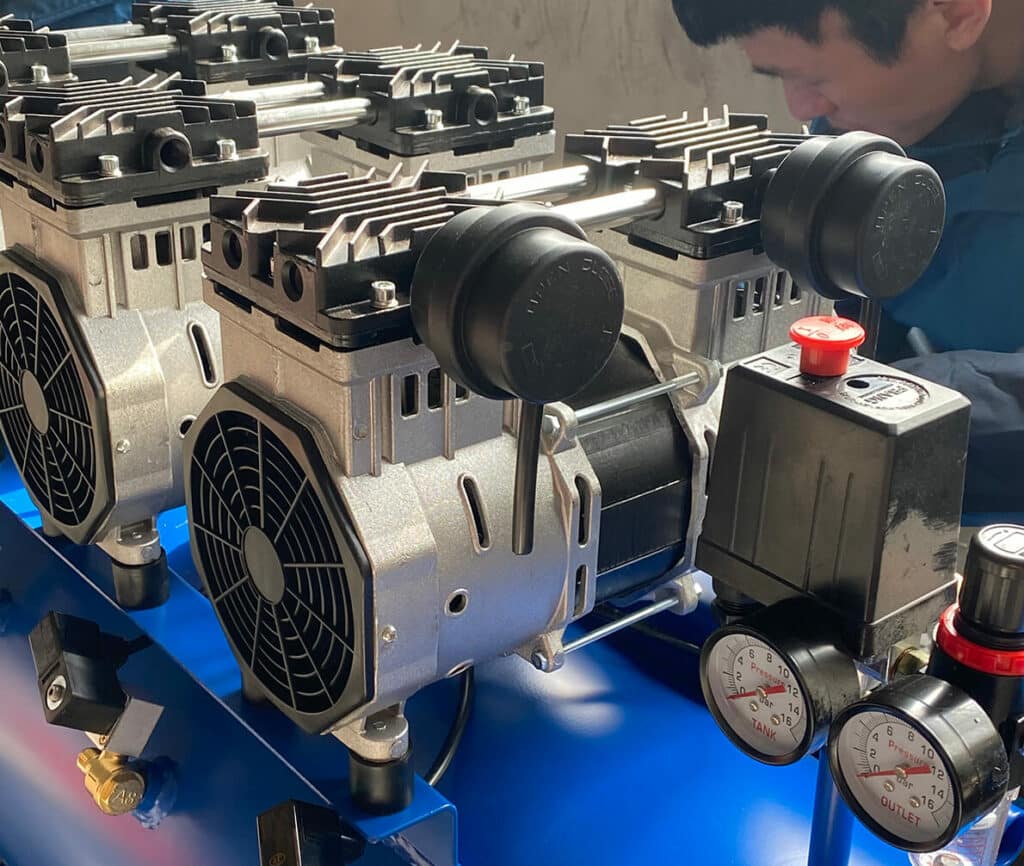
What is Valves?
Devices are used to direct or stop airflow within a system.
Water-cooled compressor
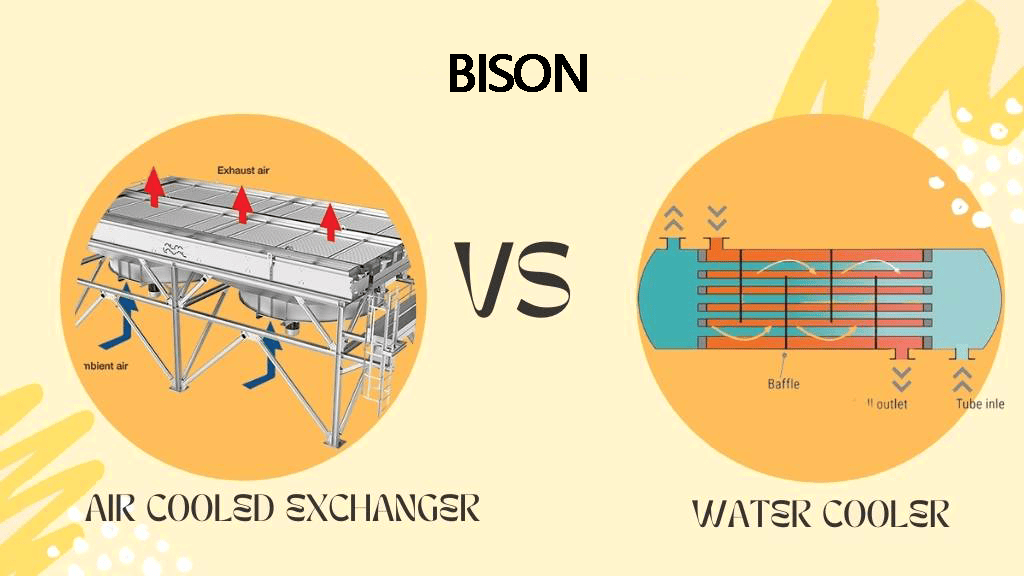
A water- cooled compressor that is cooled by water circulation through jackets near the cylinder, or casing, between and after the compression stages.
As a professional air compressor manufacturer, BISON knows that this terminology guide may not cover all professional terms. We understand that a thorough understanding of the terminology of the air compressor industry is critical to your career development. If you encounter confusion during the exploration process or need to know more about other air compressor knowledge, please feel free to contact BISON for help at any time. We are happy to discuss air compressor expertise with you and provide strong support for your business.
frequently asked questions about Air compressor terminology guide
How many PSI is a CFM?
CFM measures at a given PSI and increases directly to the horsepower (HP) applied. While small, at-home mobile air compressors can deliver about 2 CFM, industrial air compressors with 200 HP can achieve an airflow of about 1,000 CFM at 100 PSI.
What is 1 CFM?
A cubic foot is 28.3 liters. 1 CFM is a flow rate of 28.3 liters per minute.
What is the PSI of normal air?
Normal sea-level pressure is 14.7 pounds per square inch or 1013.25 millibars. A millibar is a unit used to report atmospheric pressure.
Is a higher PSI better?
So, when inflating your tires, the recommended tire pressure is the best compromise between comfort, handling, safety and fuel economy. But it’s okay to go over recommended inflation by a psi or two. And going up is always better than going down.

